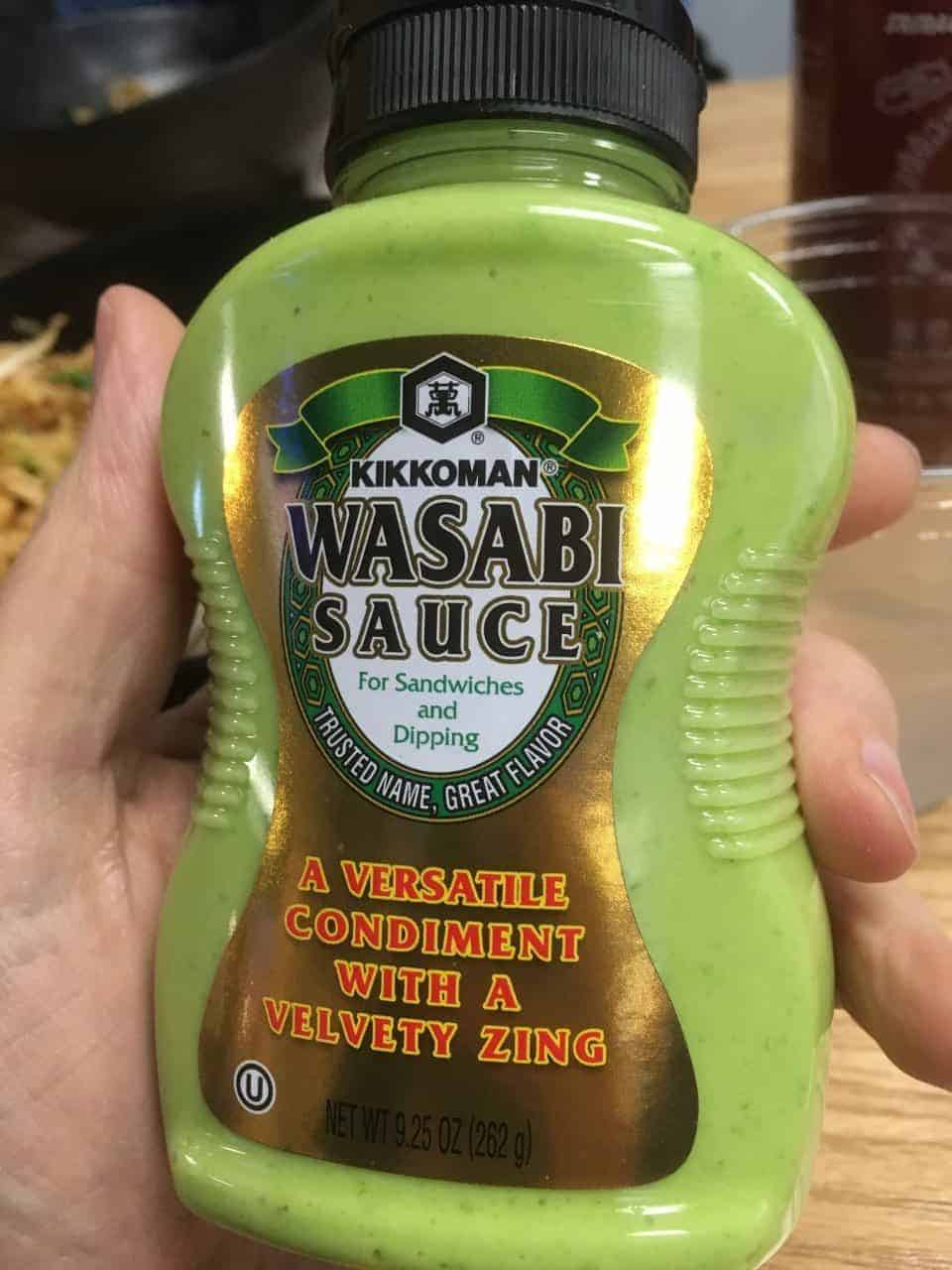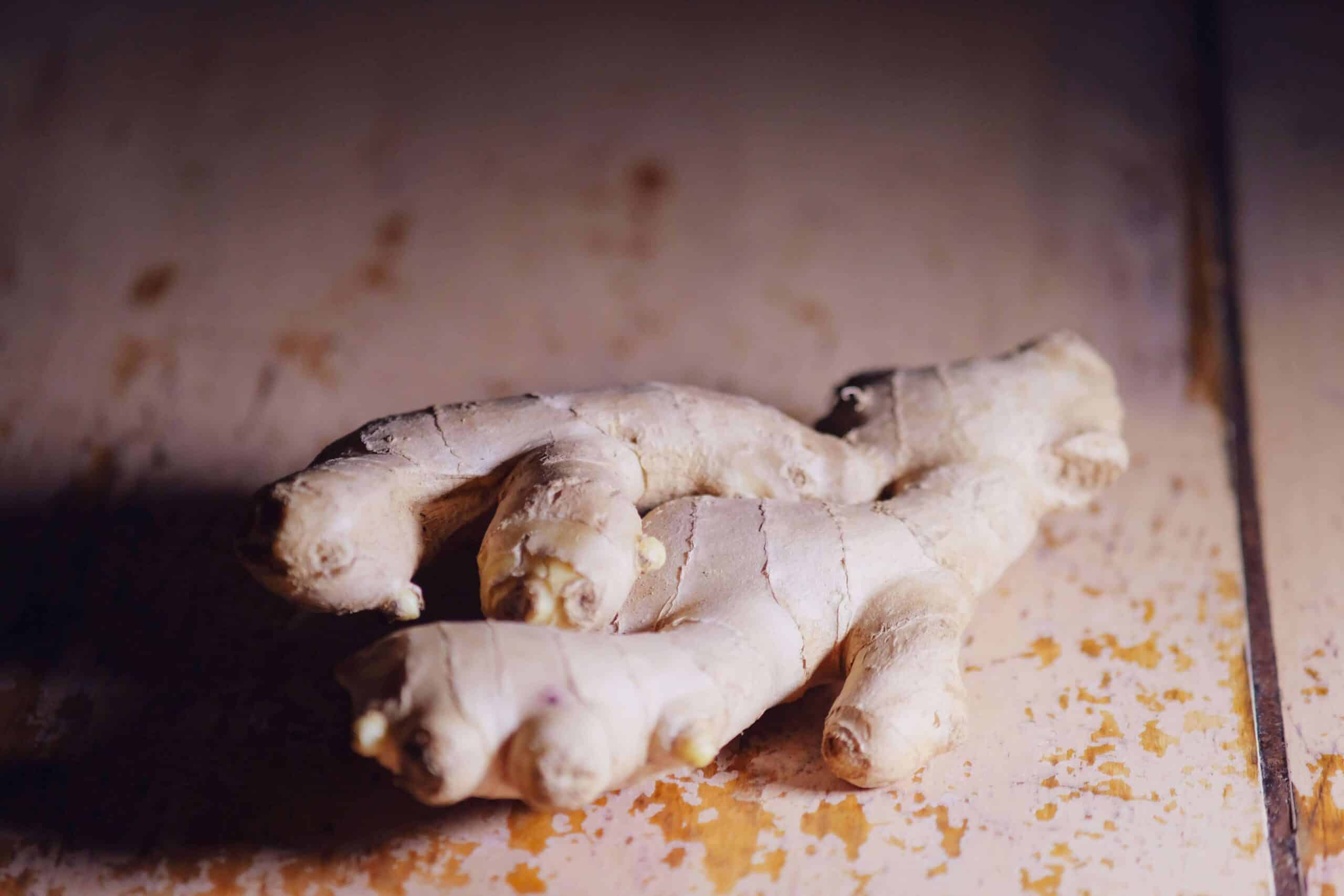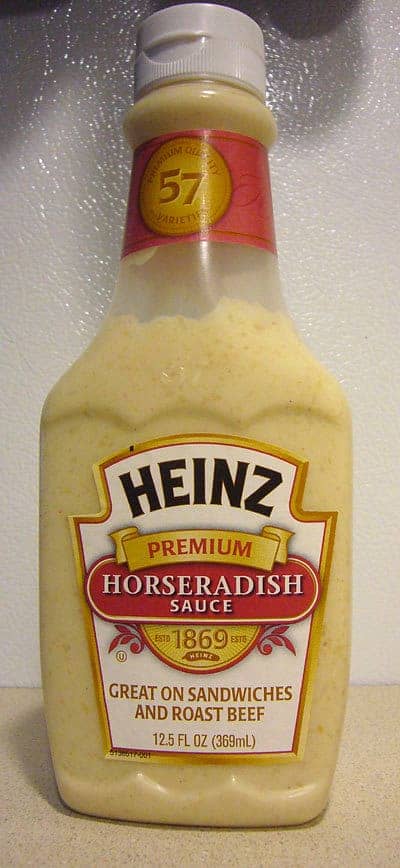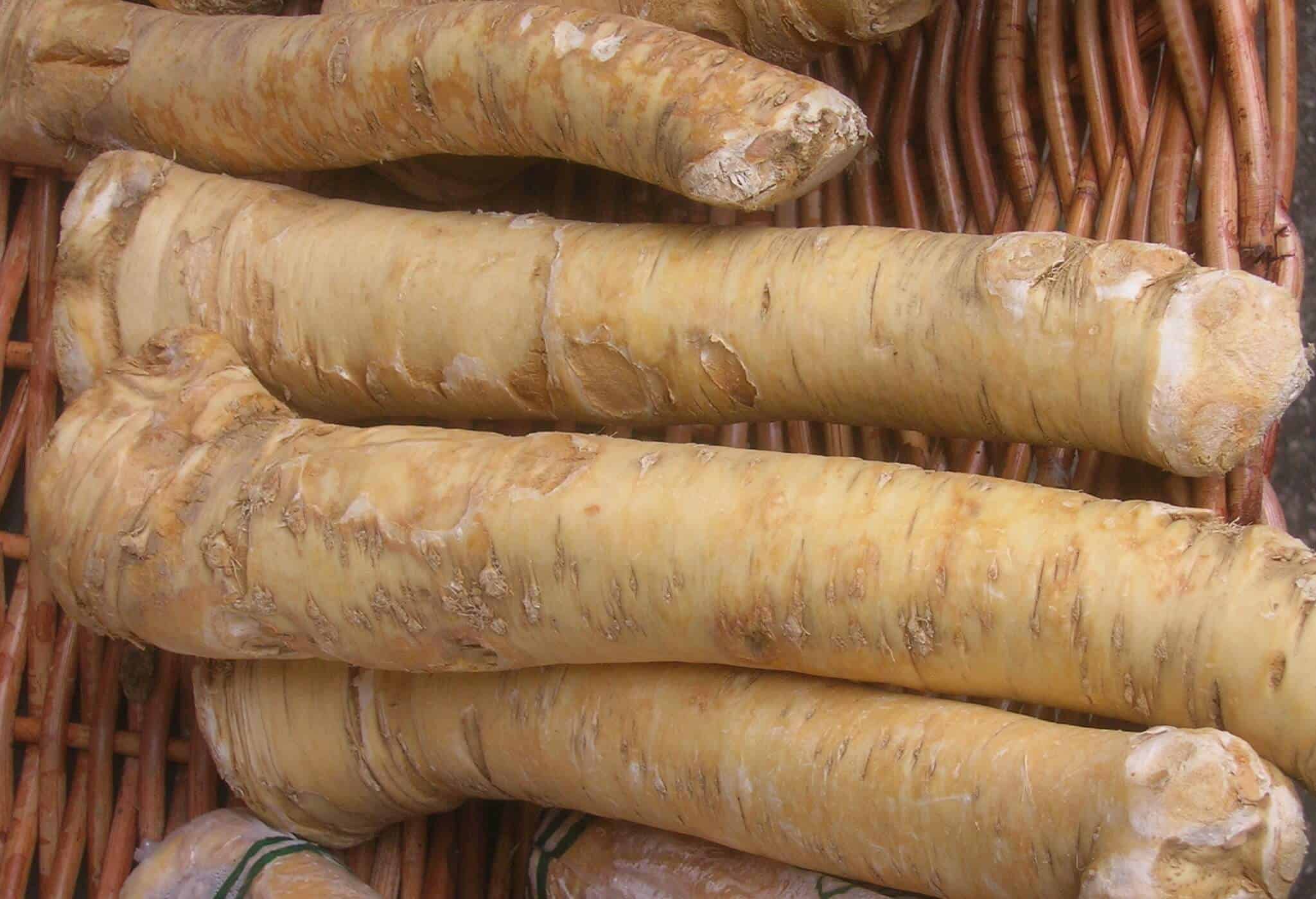Horseradish has cancer-fighting properties. The root fights against inflammation. The spice has a powerful scent that can irritate your throat and eyes. But, if you are not able or don't want to use a horseradish for some reason, what would be the substitutes? Let's find out...
What are substitutes of horseradish? All about horseradish
Having the ability to bring tears in your eyes, horseradish delivers a short and intense flavor to your mouth. A very few people can actually consume a spoonful of the sauce, but it is vastly used in deli sandwiches and different spices. The grated version is used as toppings to add spicy flavor to bland dishes.
If anytime you don’t have access to this spicy root, don’t panic. There are suitable substitutes for this spice that can add a similar flavor to your dish.
These substitutes can help you replicate a similar flavor to horseradish. However, the root is unique. So, let us get to know something about it.
Substitutes of Horseradish
Are you looking for great replacements for horseradish? If yes, we have mentioned all the six horseradish substitutes below that resemble the taste and are highly nutritional.
Readout all the detailed information below:
- Brown mustard

Mustard belongs to the same family pack, just like horseradish. Being packed with lots of heat, it is the most sought-after substitute for horseradish. Its peppery and pungent profile, especially in brown mustard, holds a strong resemblance to horseradish, making it the #1 choice for all. Not just this, its light brown color and higher seed concentration also keep it on top.
Substitution Ratio
If using 1 cup of horseradish, you can use equal quantities of brown mustard.
- Wasabi paste

As Wasabi is also a member of the same Brassica family of which horseradish is a part, it is considered a perfect replacement for horseradish. Holding similar flavors, it is a blend of green color and horseradish when you look for it outside Japan. Its vibrant green color may not be a fan for many, but people still prefer eating it owing to its rich flavors and taste.
For people with allergies, wasabi paste or root should be completely avoided.
Substitution Ratio
As Wasabi is loaded with punchy flavor, you can initiate with a test by using a small amount and later increase as per your taste palette.
- Black Radish

Coming on number 3, black radish has the spiciest skin element. In looks, it looks just like a beetroot having a dark reddish-black color with white flesh inside. Its hot, spicy, and crisp flavors make it a great alternative for horseradish. Don’t think that reciprocating its taste will be a hard nut to crack. The only challenge is that its spicy skin can be harsh for many horseradish lovers. Thus, you need to be quite careful with adding it to the dish if you want limited heat.
For best results: Peel your black radish and then grate it for a mild heat profile.
Substitution Ratio
If using 1 cup of horseradish, you can add equal quantities of black radish.
- Fresh ginger

For a punchy earthy taste, fresh ginger can also be your pick for matching that missing horseradish taste. However, mind your ginger flavor as you don’t want it to be quite overpowering with its slow warming taste. But yes, if you want a strong spicy flavor, the unique lemony fresh ginger will be needed in more quantity.
Substitution Ratio
If using 1 cup of horseradish, you can add equal quantities of ginger.
With ginger, you need to understand that its strong flavor can ruin the entire dish so, use it wisely even if the heat remains less.
- Horseradish Sauce

It is an obvious option for people not to have horseradish in vegetable form. However, you need to be cautious that it will not carry the original horseradish flavor and will have less heat in the packed sauce bottle.
Substitution Ratio
If using 1 cup of horseradish, you can add 1.5 cups of sauce to imitate its heat levels.
- Hot Sauce

Although its flavor profile is entirely different, replace it with your regular hot sauce to have that hot spicy flavor. The best thing about this is you can add it in low quantities and still achieve your spicy, zingy flavor in dishes. Now, as the heat is strong here, you can neutralize it with some acid addition.
Substitution Ratio
If using 1 cup of horseradish, you can add half of the hot sauce quantity.
What is horseradish?
Horseradish is a white root of a perennial plant and has long leaves. It has no odor of its own, but once you cut it, you will be able to witness its sinus-clearing heat.

After cutting the root, the enzyme present in it breaks down the sinigrin into mustard oil. The oil is also knowns as allyl isothiocyanate and is volatile in nature. When it reacts with oxygen in the air, it spreads a pungent scent that may irritate your throat and eyes.
You can use the root in fresh, dried, and powdered form. The leaves of the plant are also edible.
To avoid this pungent scent, the spice is preserved with vinegar, salt, and sugar. Vinegar acts as a stabilizing agent and preserves the flavor for a long time. The preserved horseradish is knowns as prepared horseradish and is used as a condiment in many dishes.
By adding some sour cream or mayonnaise to this mixture, you can prepare horseradish sauce. The cream reduces the pungent flavor of the spice and gives a mild aroma. It is vastly used in different sandwiches, sauces and can also be consumed as a dip.
The spice is highly nutritive and provides many benefits to the human body. Let us have a quick peek into them.
Nutritive value and benefits of horseradish
100 grams of horseradish contains
The spice is quite beneficial for the human body. Let us have a peek into its significant benefits:
- Cancer-fighting properties
Compounds like isothiocyanates and glucosinolates present in horseradish possess anti-cancer properties. Studies show that these compounds cause the death of the cancer cells, which cause colon cancer. Horseradish has ten times more glucosinolates as compared to broccoli.
According to the research, the peroxidase enzyme present in the root activates the compound in the human body that fights with pancreatic cancer cells.
- Aids digestive system
The root promotes digestion and regulates the bowel moments in the human body. Being a cholagogue, it stimulates the gall bladder to produce bile which as a result promotes digestion.
- Aids in UTIs
Sinigrin is present in the root, which acts as a diuretic and prevents water retention in the human body. So, in the case of UTIs, this root can help the body to fight against the infection.
- Filled with antioxidants
The root is filled with antioxidants that aid the human body in several aspects. Some antioxidants possess antimutagenic properties which protect your body from mutagens that can adversely harm you.
- Antimicrobial properties
Horseradish helps your body to fight against several microbes. If you are suffering from ear infections, this root will help you recover better.
- Promote hair growth
The antioxidants present in the root promote hair growth and reduces hair fall. You can prepare a moist mass of the horseradish root and apply it directly to your scalp. Leave it for approximately 20 minutes, then wash your hair with your regular shampoo.
- Helps in respiratory issues
Horseradish has a sinus-clearing scent. In simple words, the root has a pungent smell that helps you clear your nose and sinuses. If you are suffering from cold, the root can help clear the passageway and help you properly breathe.
- Reduces age spots
When it comes to age-sports, the root offers an excellent solution to fight against them. Make a paste with horseradish and apply it directly to your face. Now, wait for approximately twenty minutes and wash your face with water. Follow this remedy a few times a week to get better results.
Another remedy for age spots is to grate a piece(4-inch) of the root and mix it with apple cider vinegar(quarter-cup). Keep the mixture in a bowl for two weeks and then strain it. Use cotton blobs to apply the prepared mixture directly to the age spots. Do this three times a day, and you will see the difference in some days.
- Helps with Melasma
You can use the root to fade the brown patches on your face. The first remedy is to cut pieces of the root and apply them on the patches and let the juice soak into your skin. Leave the skin for some time to dry, and then wash it with water. Do this once a week until you see some difference in the color of the patches. They will soon start to fade.
The second remedy is to prepare a paste with sour cream and two tablespoons of horseradish. Apply it directly on the patches and leave it on your skin for thirty minutes. Then wash your skin with water. Repeat this remedy once a week until you see some good results.
Side effects of horseradish
The pungent smell of the root can irritate your nose and throat. Moreover, only one spoon of the sauce can bring a lot of tears to your eyes. Due to its spiny nature, it can further deteriorate the condition if you are suffering from stomach ulcers.
As the root is quite spicy, so you should use it with caution if you are preparing some dish for your kids. It can give a burning sensation to their tongue.
Never run out of stock
If you want unlimited access to the root, then you can grow it in your home.
Steps to plant, grow and harvest the spice
- Buy a cutting of root from a greenhouse near to hour home. Most often, you will get crowns or roots that are ready to plant directly. The horseradish root is planted in the spring season.
- Being a perennial plant, the spice lives in your garden for a long time. So, make sure you dedicate a different space for the plant.
- Dig a hole in the soli that is approximately 12 inches deep and plant the root or crown diagonally in it. While planting, make sure that you fix the root at an angle close to 45 degrees. Also, keep the hole approximately 18 inches away from other plants. This will allow the horseradish to flourish properly.
- Make sure that the plant gets ample sunlight which will promote its growth. Shaded areas will also work fine, but direct sunlight will let the plant grow at a faster rate. You have to water the plant once or twice a week.
- You can use fertilizers and compost to promote its growth. Low nitrogen and high phosphorus fertilizers are optimum for horseradish.
- Be aware of the weeds and suckers of the plant. The weeds can grow at an exponential rate and destroy other plants in your garden. So, keep a check on them and keep only three to four leaf stalks over the plant.
- When the fall comes, the root is ready to harvest. Loosen the soil around it and when you see the horseradish root, grab it with your hand and pull it slowly. Make sure that the entire root comes out. If any part remains inside the soil, it can result in the plant’s undesirable growth in your space.
- Now, cut the leaves and throw them away. You can also use them to make compost. Now you have ample horseradish to store and use anytime you want.
- If you want to replant the root, cut it from the middle and plant it again in the soil in the season.
Final Lines
Having a strong, pungent smell and spicy taste, horseradish imparts a flavor bomb on your bland dishes. However, you should use the root carefully as it can cause a burning sensation to your tongue.
You can store the root in a plastic bag in your refrigerator for one to two weeks. After that, it will dry up and lose its scent. In the case of the grated form, you can store it in the refrigerator for six months. The prepared horseradish holds the flavor for six weeks to three months. However, as time passes away, it slowly loses its flavor.
In case you are out of the root, you can use the substitutes to get a similar flavor and experiment with your dishes.
More Posts for You:
